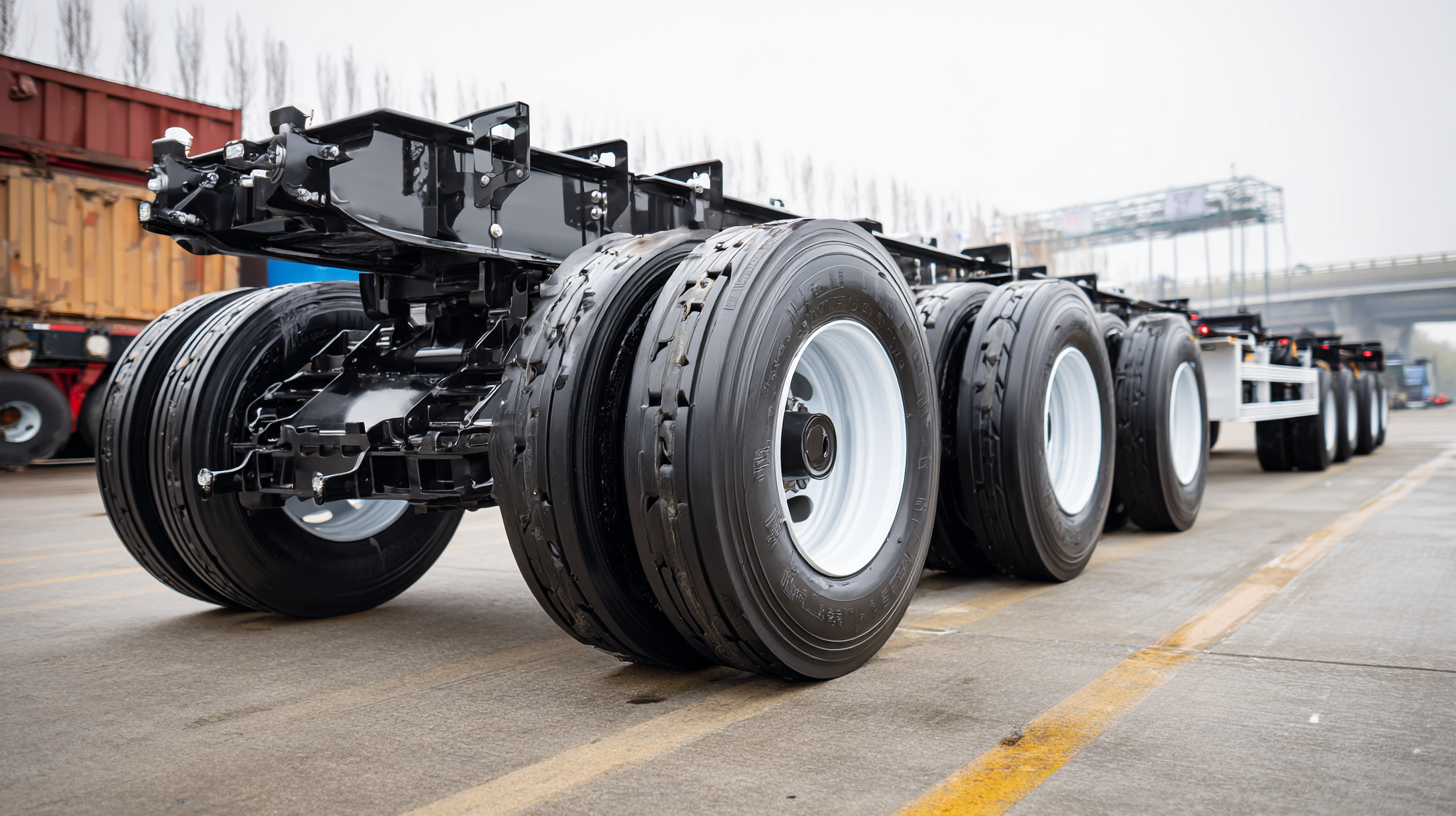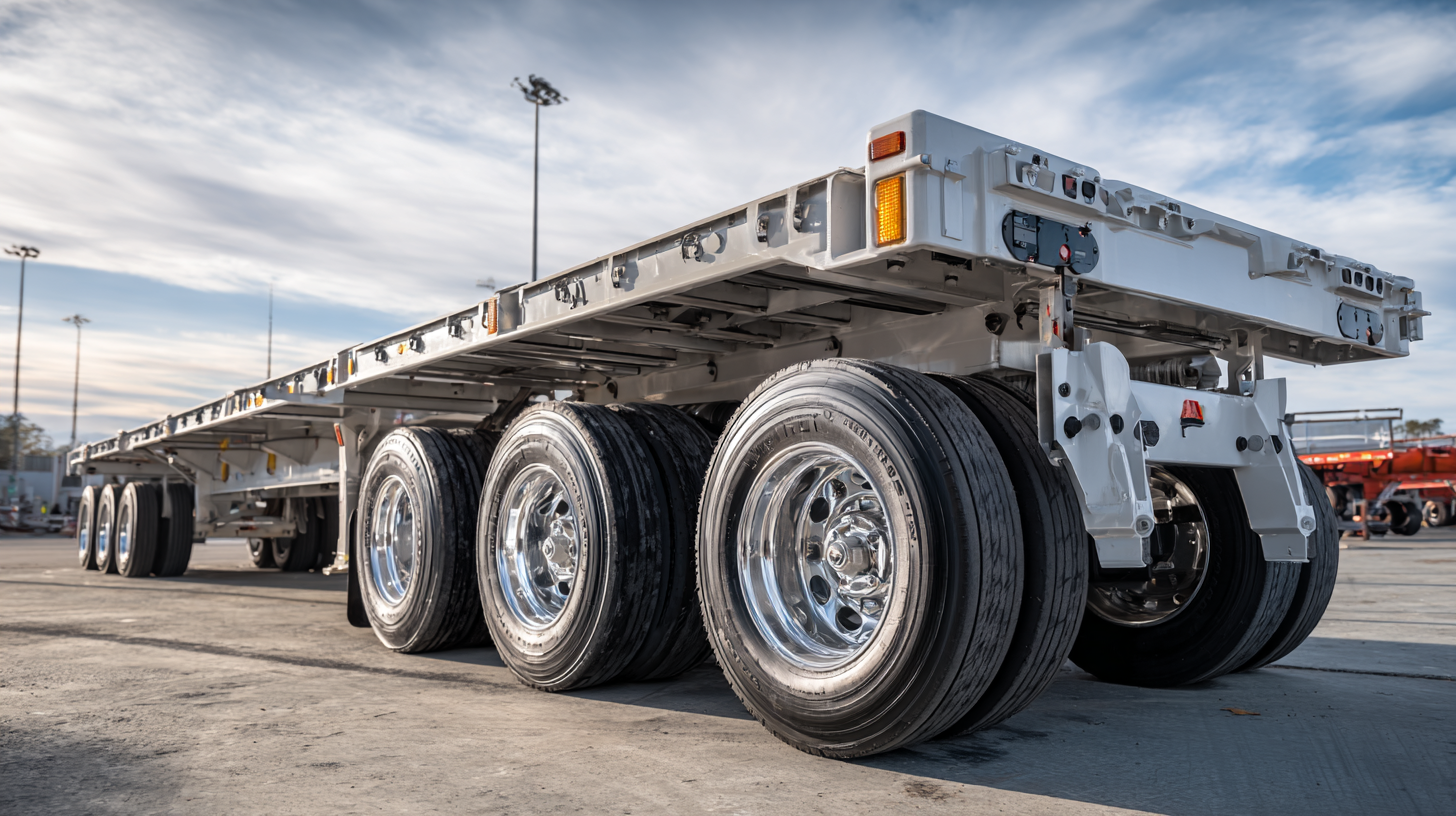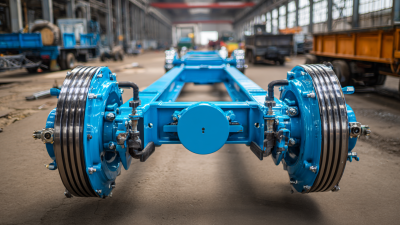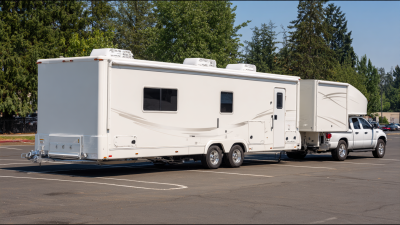Understanding the Importance of Choosing the Right Trailer Axles for Your Hauling Needs
In the world of transportation and logistics, selecting the appropriate trailer axles is crucial for optimizing payload capacity and ensuring road safety. A recent report by the National Association of Trailer Manufacturers (NATM) indicates that over 75% of trailer failures can be traced back to axle issues, underscoring the importance of choosing the right trailer axles for your specific hauling needs. With the right axle configuration, businesses can enhance fuel efficiency by up to 15%, thereby reducing operational costs substantially. Moreover, proper axle specifications directly affect the trailer’s stability and maneuverability, which are critical for compliance with federal safety standards. As the demand for efficient freight transport continues to rise, understanding the nuances of trailer axles not only aids in meeting regulatory requirements but also boosts overall performance and reliability in hauling operations.

Factors to Consider When Selecting Trailer Axles for Different Loads
When selecting trailer axles for various hauling needs, it's crucial to consider several key factors. Firstly, the load capacity of the axle must align with the weight of the cargo being transported. According to a report from the National Trailer Manufacturers Association, choosing an axle with a capacity exceeding the anticipated load by at least 20% is recommended to ensure safe and efficient transportation. For example, if the intended load is 5,000 pounds, an axle rated for at least 6,000 pounds would provide an adequate safety margin.
Secondly, the type of load significantly influences the choice of axle design. Different materials and shipping conditions require distinct axle configurations to optimize performance. A study published by the Trailer Industry Association indicates that a dual axle setup can improve load distribution and stability, especially for uneven or heavy loads. Additionally, factors such as road conditions, which can lead to increased wear, should also inform decisions. Utilizing axles with appropriate materials and protective coatings can prolong lifespan and enhance reliability, making it imperative for operators to evaluate their specific needs when choosing the right trailer axles.

Understanding the Types of Trailer Axles and Their Uses
When selecting trailer axles, it’s essential to understand the different types available and their respective uses. Common types include single axles, tandem axles, and triple axles.
 Single axles are often found on smaller trailers and are suitable for lighter loads, making them ideal for personal or recreational use. In contrast, tandem axles provide better weight distribution and stability, making them a popular choice for larger trailers that haul heavier loads, such as construction materials or vehicles.
Single axles are often found on smaller trailers and are suitable for lighter loads, making them ideal for personal or recreational use. In contrast, tandem axles provide better weight distribution and stability, making them a popular choice for larger trailers that haul heavier loads, such as construction materials or vehicles.
Triple axles, while less common, are designed for maximum weight capacity and stability. They are typically used in commercial applications where heavy-duty hauling is necessary, such as transport for machinery or large cargo. Understanding these variations in trailer axles enables you to choose the right configuration based on your specific hauling needs, ensuring that your trailer performs efficiently and safely under different load conditions.
Evaluating Weight Ratings and Load Capacity for Your Trailer
When selecting trailer axles, evaluating weight ratings and load capacity is crucial for ensuring safe and efficient hauling. Weight ratings are typically indicated by the Gross Vehicle Weight Rating (GVWR) and the axle weight ratings, which define the maximum load the trailer can safely carry. Choosing axles that match or exceed the required weight ratings not only prevents structural failure but also enhances the performance of your trailer. An axle with insufficient rating can lead to premature wear and increased risk of accidents, highlighting the need for careful assessment of your hauling requirements.
Load capacity is closely tied to the type of materials used in the construction of the trailer axles. High-strength steel or specialized alloys can provide increased durability and support heavier loads. Additionally, it's essential to consider the distribution of weight across the axles. An uneven load can strain one axle while underutilizing another, potentially leading to failure. By focusing on both weight ratings and proper load distribution, you can effectively tailor your trailer axles to meet your specific hauling needs, ensuring a smooth and reliable towing experience.
Understanding the Importance of Choosing the Right Trailer Axles for Your Hauling Needs
| Axle Type | Weight Rating (lbs) | Load Capacity (lbs) | Ideal Trailer Types | Common Uses |
|---|---|---|---|---|
| Single Axle | 3500 | 2900 | Utility Trailers | Lightweight Hauling |
| Tandem Axle | 7000 | 5800 | Car Haulers | Heavy Cargo Transport |
| Triple Axle | 10000 | 8700 | Large Equipment Trailers | Construction Equipment Hauling |
| Heavy Duty Axle | 14000 | 12000 | Dump Trailers | Waste Removal |
Assessing the Impact of Wheel Configuration on Traction and Stability
The configuration of trailer wheels plays a critical role in determining the overall traction and stability of a hauling setup. According to a report from the National Association of Trailer Manufacturers, the correct axle spacing can significantly affect a trailer's weight distribution, which enhances traction on uneven terrain. For instance, trailers designed with tandem axles exhibit superior stability and load-bearing capacity compared to single-axle configurations, particularly important when navigating challenging road conditions.
In addition, wheel placement impacts the trailer’s center of gravity. A study published by the American Society of Mechanical Engineers indicates that trailers with a wider wheelbase can reduce sway and enhance stability during sharp turns or adverse weather conditions. This stability is paramount for safety, especially when transporting heavy or valuable cargo. Furthermore, inadequate wheel configurations may lead to uneven tire wear, which not only shortens tire lifespan but also compromises road grip. Thus, assessing wheel configuration carefully is essential for maximizing performance and ensuring safety on the road.
Understanding the Impact of Wheel Configuration on Traction and Stability
Maintenance Tips for Prolonging the Life of Your Trailer Axles
Choosing the right trailer axles is crucial for optimizing performance and safety in hauling operations. However, even the best axles require proper maintenance to ensure longevity and functionality. Regular checks can significantly extend the lifespan of trailer axles, which, according to the National Association of Trailer Manufacturers (NATM), can save up to 30% on replacement costs.
First and foremost, routine inspections should focus on the wheel bearings, brakes, and suspension components. The NATM recommends inspecting these parts at least every three months, especially for trailers used in heavy-duty applications. Moreover, ensuring that axles are properly lubricated can minimize friction and heat, prolonging their life. Studies have shown that trailers maintained with appropriate lubrication techniques experience less wear, adding years to their usability.
In addition to mechanical inspections, it is also essential to maintain the correct tire pressure. Under-inflated tires can create uneven weight distribution, leading to stress on the axles. According to the Tire Industry Association, maintaining tire pressure can improve efficiency by up to 3% and significantly reduce the risk of axle damage. By adhering to these maintenance practices, you can ensure that your trailer axles serve you well for many hauls to come.
Related Posts
-

2025 Tech Innovations in Trailer Axles: Essential Strategies for Staying Ahead in the Industry
-

Understanding Global Production Standards: What Defines the Best Trailer Axles?
-

7 Best Tips for Choosing the Right Boat Trailer Axle
-

How to Choose the Best Trailer Accessories for Your Hauling Needs
-

Trailer Kit Showdown: An In-Depth Comparison of Top Brands and Their Performance Metrics
-

Ultimate Guide to Choosing the Best Aluminum Boat Trailer for Global Buyers
